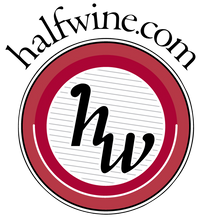Tasting notes
Has the classic Bordeaux characteristics of blackcurrant, plum, cherry, and subtle oak influences. Ideal with roasts, grills and hard cheeses.
Why we recommend this wine
We asked for this wine to be shipped to the UK especially for us from the Chateau when we visited earlier this year. We do not ordinarily focus on a vintage because, being independent, we do not have to buy every vintage of a wine, so we don’t offer below par vintages. However, 2016 (along with 2019) was the best vintage in Bordeaux in the last decade. And this wine, with 8 years bottle age, is drinking perfectly. When it’s gone it’s gone.
The wine
Chateau Siaurac has vines, 35 years old on average, planted on layers of clay and sandy-clay. 2016 is a blend of 74% Merlot, 19% Cabernet Franc and 7% Malbec.
The wine estate
Château Siaurac is located on the plateau of Néac, which is a continuation of the famous plateau of Pomerol, and its vineyard is in one single plot. It is the largest estate of the appellation and comprises 46 hectares of planted vine and is one of the most iconic estates of its appellation. Indeed, as remarked upon in Férét’s 1893 edition of Bordeaux et ses vins: “Château Siaurac is only separated from the first growths of Pomerol by a small trickle of water called the Barbane.” Chateau Siaurac could win an award for the most beautiful estate in the Lalande de Pomerol appellation, with its stunning chateau and manicured grounds, gardens, and parkland, which were designed in 1850. Used to be privately owned but is now owned by a French insurance company who also own Chateau Latour in Pauillac.
siaurac.com
Food and wine
Red meat, roasted or grilled or barbecued. Hard cheeses such as cheddar or comte. Dark chocolate. So quite versatile but matches strong flavours. Refer also to our food and wine pairing guide, click here.
Did you know?
Growers in the appellation did not start using the appellation name, Lalande de Pomerol on their labels until 1954 when the appellation was formally created. Prior to that some growers labeled their wine as being from Pomerol. These two appellation boundaries are based on the commune boundaries but clearly, there are growers in Lalande de Pomerol making better wine from better clay terroir than numerous growers in Pomerol are producing from sandy soils in the west end of that appellation.
Tasting notes
Has the classic Bordeaux characteristics of blackcurrant, plum, cherry, and subtle oak influences. Ideal with roasts, grills and hard cheeses.
Why we recommend this wine
We asked for this wine to be shipped to the UK especially for us from the Chateau when we visited earlier this year. We do not ordinarily focus on a vintage because, being independent, we do not have to buy every vintage of a wine, so we don’t offer below par vintages. However, 2016 (along with 2019) was the best vintage in Bordeaux in the last decade. And this wine, with 8 years bottle age, is drinking perfectly. When it’s gone it’s gone.
The wine
Chateau Siaurac has vines, 35 years old on average, planted on layers of clay and sandy-clay. 2016 is a blend of 74% Merlot, 19% Cabernet Franc and 7% Malbec.
The wine estate
Château Siaurac is located on the plateau of Néac, which is a continuation of the famous plateau of Pomerol, and its vineyard is in one single plot. It is the largest estate of the appellation and comprises 46 hectares of planted vine and is one of the most iconic estates of its appellation. Indeed, as remarked upon in Férét’s 1893 edition of Bordeaux et ses vins: “Château Siaurac is only separated from the first growths of Pomerol by a small trickle of water called the Barbane.” Chateau Siaurac could win an award for the most beautiful estate in the Lalande de Pomerol appellation, with its stunning chateau and manicured grounds, gardens, and parkland, which were designed in 1850. Used to be privately owned but is now owned by a French insurance company who also own Chateau Latour in Pauillac.
siaurac.com
Food and wine
Red meat, roasted or grilled or barbecued. Hard cheeses such as cheddar or comte. Dark chocolate. So quite versatile but matches strong flavours. Refer also to our food and wine pairing guide, click here.
Did you know?
Growers in the appellation did not start using the appellation name, Lalande de Pomerol on their labels until 1954 when the appellation was formally created. Prior to that some growers labeled their wine as being from Pomerol. These two appellation boundaries are based on the commune boundaries but clearly, there are growers in Lalande de Pomerol making better wine from better clay terroir than numerous growers in Pomerol are producing from sandy soils in the west end of that appellation.




